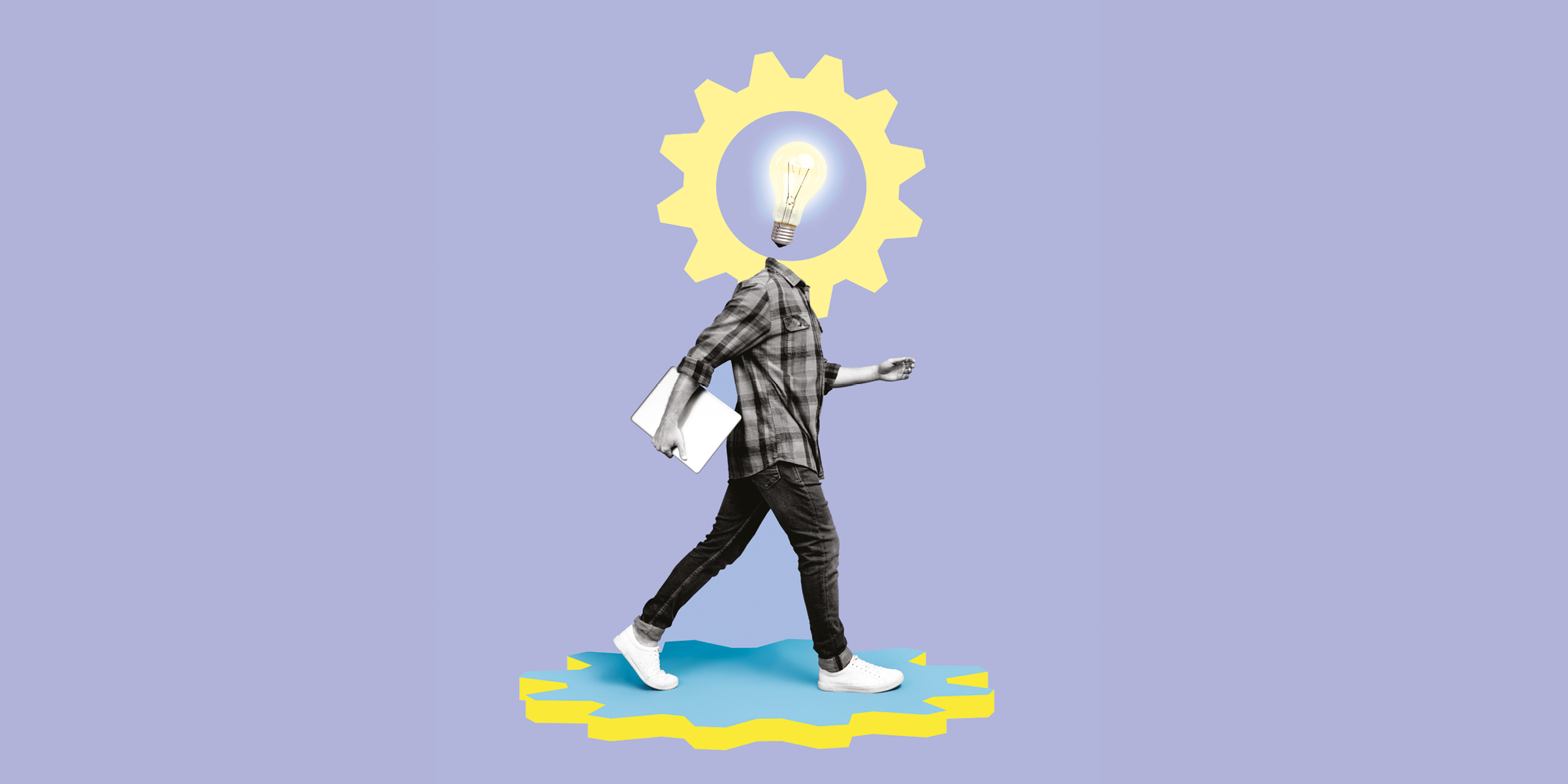Say Hello to your new favorite customers. Why HR should treat employees as a business’ most important customer win.
Is the employee experience the same as the customer experience and, if so, should HR approach their employees as customers? Such was the question I asked in a webcast series on lightbulb moments in the HCM discipline, run by Leatham Green, transformation director at Oracle. A contribution arguably intended to “turn up the flame” rather than be a real outright lightbulb moment for HCM, it nevertheless remains an important topic to fuel most conversations about reimagining the workforce today.
So why is employee experience important?
I remember arguing with the concept that HR was there to protect the employer. Now,
employee experience is key in all HCM projects
Many years ago, when embarking on the people module for the Chartered Director program with the Institute of Directors, I remember arguing with the concept that HR was there to protect the employer.
In my role as a systems implementer, I think we have moved on from those days now, with employee experience being key in all HCM projects today and often part of an organization’s goals.
The change emerged steadily, and it first became key in the candidate process; organizations wanted software that could help them improve in that area. But, speaking with two companies at a software conference recently, their reasons were far beyond just the candidate experience – they also saw the bounce-back value to their organizations.
The first was a major European bank that needed the experience to be “beyond good.” They explained that even if a candidate was unsuccessful, they needed to feel the bank cared – after all, they could be an existing or future customer.
The other organization was a mining company, an industry that needs to work hard to sell what they do and communicate their impact at an even earlier stage if they are to get candidates at all.
They went further than most organizations, whose main driver for a positive candidate experience was to attract young people. It actually expanded on that, seeking to give an employee experience that also retained their people. Plus, with the desire to work with modern, intuitive systems ranking highly, avoiding the technology needed to help here
could even result in candidates simply seeing the employer as out of touch.
Just as the concept of employee experience was growing as an objective, the COVID pandemic rocket-fueled its growth right into inner boardroom conversations, with strong evidence to suggest that if you improve employee experience you will improve customer experience.
What’s in an experience?
To compare the employee to the customer, we need to explore the customer experience.
Let us start with a personal example of a great customer experience. Earlier this year, I had an accident and needed the NHS. Now, in the news, we hear all about the KPIs for the NHS, but they are about what the NHS does. They are not about how the patient feels.
I remember thinking and reassuring myself as I waited for them to arrive: “Yes, there will be lots of delays. But they are the best people.” And my thoughts proved true. When the ambulance arrived, the paramedics gave the best customer service. They gave empathy, quickly gave the trust I needed and were honest and open about my injuries.
It drew parallels with a TED Talk by Diana Dosik entitled “Why we need to treat our employees as thoughtfully as our customers”, which we’ll come back to later, but one thing she talked about was eliminating the pain points in the customer journey.
In my ambulance experience, they eliminated the pain points, no pun intended, but the drugs were well appreciated. The next most important pain point they eliminated was not knowing the seriousness of the accident.
That is what makes great customer service. Not the big things. Not the contract, but the things that make you feel valued and help you understand the situation.

Communicating the good and bad
Often when we discuss customer experience, we look at examples of when it is bad.
Several years ago, before as much was as online as today, I stupidly left my laptop bag on a train. Replacing the technology was quite straightforward but I lost my expenses envelope and needed to recreate an entire month’s expenses. It was such a mammoth undertaking that I wrote a blog about which companies gave me the best service and ranked them.
This was cathartic for me, but it also identified the pain points I had in the process and if it happened again today, the innovations offered by current technology will have more than likely been adopted by those companies to ease the process (not that I am offering to repeat the exercise).
When you ask people about what gave them a bad experience – communication is always high on the list. Sometimes good customer service is explaining others’ pain points, so people don’t feel injustice. A great example is the dandelion lanyards campaign which helped us to understand not all disabilities are visible.
There’s a saying that goes “good communication has a positive impact even when the news is bad, and poor communication can have a negative impact even when the news is good” and it fits in nicely here.
An example of this was a recent holiday flight – everyone boarded early, all excited to be off, when the pilot announced a hold-up as two passengers were not yet on the plane and would take some time to arrive. We needed to wait. That on its own would not have been enough to make the passengers feel better, although an improvement on no communication. But he went on to explain they had been given the wrong information at check-in and now were being escorted through the airport by airline staff.
He asked that we not give them a hard time when they eventually arrived as they were stressed enough already. That minute of communicating with the passengers meant we had empathy with them when they arrived and collectively reduced their stress.
Making the customer-employee connection
What if they directed some of that same energy at understanding and engaging their employees? What are the potential payoffs for a better motivated, more loyal and imaginatively innovating workforce?
So how does customer experience relate to employee experience?
Back to Diana Dosik’s TED Talk, Dosik pitched that “today’s companies know everything there is to know about their customers and will stop at nothing to ensure that their experience is pleasant and meaningful. But what if they directed some of that same energy at understanding and engaging their employees? What are the potential payoffs for a better motivated, more loyal and imaginatively innovating workforce?”
One main area she explored was that customer experience is segmented, not all customers have the same pain points, and yet in employee experiences, we are more single-threaded. Employee journeys are not all the same but we as employers can do much to improve the experience. We can also “nudge” our employees to follow our policy and meet our organizational goals. I use the word “nudge” because Dosik used it, as does my colleague Vicky Collier who utilizes behavioral economics in our change management.
Listening to the pain points
The place to start is to ask and then listen to your employees. A public sector organization once told me that they needed to improve employee adoption of their system, a few years after it had been implemented. I wanted to start by asking their employees about the pain points and, whilst they believed they knew the answer, they did allow a survey of the workforce.
It discovered that the employees felt there was a lack of training, not so much when they went live but afterward. If they didn’t use a process for a while and couldn’t remember, or someone new joined, each poor interaction just grew the problem.
The IT department were mystified, as they had great training available online. Then, when showing some of the participants of the survey the training, they were surprised; they didn’t know it existed let alone where to find it. It was a communication problem.
Innovations in the systems we use have all sorts of technology that can help and are designed to improve employee experience, but they can also help you identify some of the pain points. Live chat helpdesks and AI-fueled chatbots give us insight into what is being asked, especially when people give up trying to figure out the answer themselves, or from managers and colleagues.
Whatever you do to help your employees have the experience you think they want, make sure you have a simple path for when it isn’t a positive one. We tend to build for the “happy path” and when that isn’t the problem, automation may put HR even further away from the employee at a time when they need them most.
Discussing this at length with Oracle’s Green after the webcast, he offered this thought: “Employees want to know that their voices are heard and there is a purpose to what they do, and they will be treated as an individual with unique traits and aspirations – just as we all do in our lives.”
And the value to organizations that get this right? Green summed this up by saying: “If you have a great employee experience, hiring becomes easier, productivity increases and there is more collaboration and creativity. Also, a great employee experience is positively correlated to business success – organizations who can do this well will have higher levels of employee engagement, better company culture and productivity.
“It also improves the lives and well-being of your colleagues alongside your organization’s reputation. Organizations that succeed in recruiting and retaining top talent are those that help their employees explore their interests and passions, build their skills and grow their careers.”
It’s a win-win game, your employees should be your favorite customers, your inner circle of individuals that directly impact your business success, reputation and future, not to mention the experience of your actual end customers too.
So, surely by employing tactics like these to keep that lightbulb aglow – the notion of employee buy-in has never looked so bright.
Debra Lilley is vice president customer success, Inoapps.




